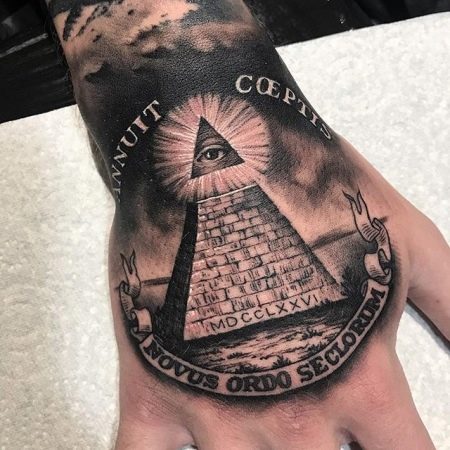What do Egyptian tattoos mean and what are they like?
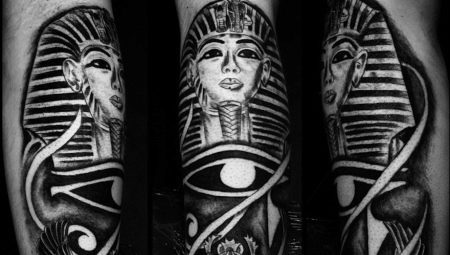
The mysterious and enigmatic mythology of Egypt has always attracted the attention of people, so tattoos with Egyptian symbols are very common. Before giving preference to any image, you need to familiarize yourself with its meanings and possible implications. In this article, you will find out what are the distinctive features of the mythological tattoos of an ancient country, as well as get acquainted with the meaning of some popular images.
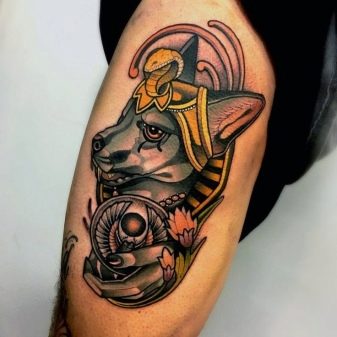
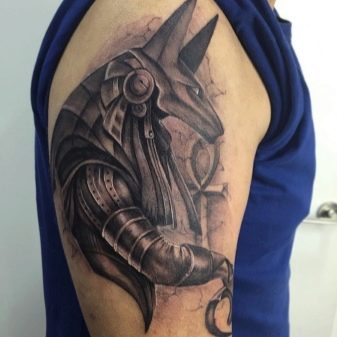
Peculiarities
Body painting appeared in Egypt about 4 thousand years ago. Women were the first to apply images; such art became available to men only after some time.
In ancient times, tattoos were applied to the body, giving them a supernatural, religious meaning. The first wearable designs were made in the form of lines and dots, expressing the flow of energy in the body.
Nowadays, sacred Egyptian tattoos are no longer so widespread - they were replaced by graphic images, animals and deities in the Egyptian style.
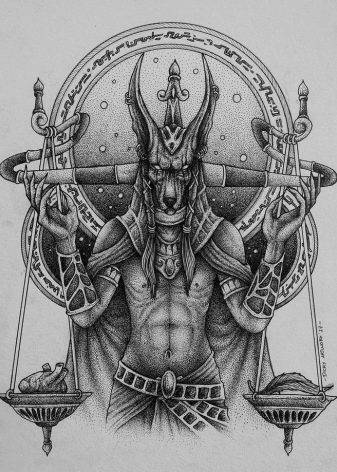
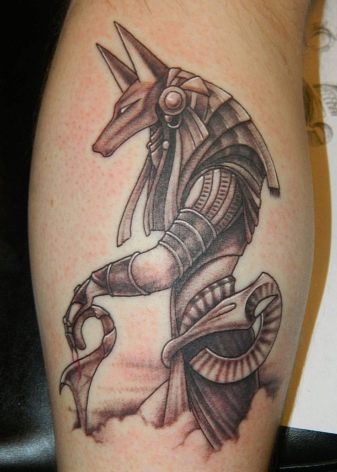
The theme of the country of the pyramids is recognizable all over the world - one glance at the drawing is enough to determine its origin. Consider the most common modern Egyptian tattoos.
- Architecture - recognizable pyramids, sphinxes or Egyptian sculptures.
- People - these can be rulers of antiquity, pharaohs, queens or mummies.
- Animals - the most popular are cats sacred to the Egyptians, images of birds or ungulate mammals are also often found.
- Religion - Egyptian mythology contains a description of a large number of deities, many of whom are often depicted in body art.
- Symbols - the hieroglyphs of the country of the pyramids are easy to distinguish from others, because they often look like objects surrounding a person, for example, feathers, flowers, eyes or beetles.
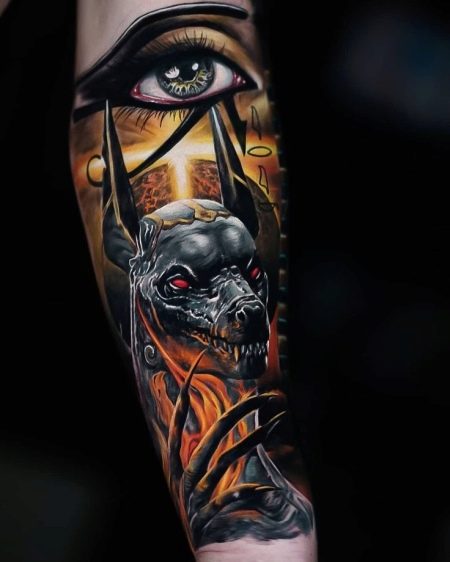
Species overview
Egyptian tattoos are closely related to the history and mythology of the African country. However, such drawings are not considered by specialists only in an esoteric context, so there are often disputes about their true interpretation. Most tattoos do not have one definite meaning, therefore such images are often regarded as a denial of mainstream religions.
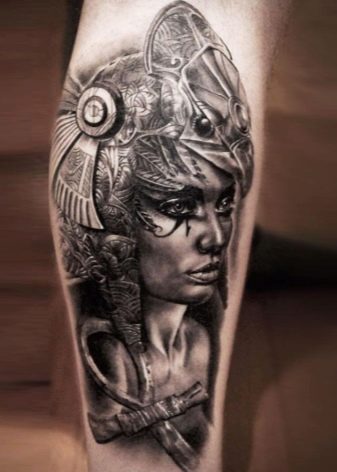
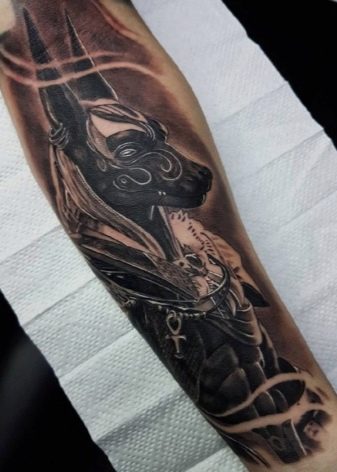
Another special meaning of the Egyptian underwear design is the desire of the wearer to attract good luck. Some symbols of the ancient country are used as talismans, protecting from trouble and attracting fortune. We propose to take a closer look at the meaning of the most popular tattoos in the style of Egypt.
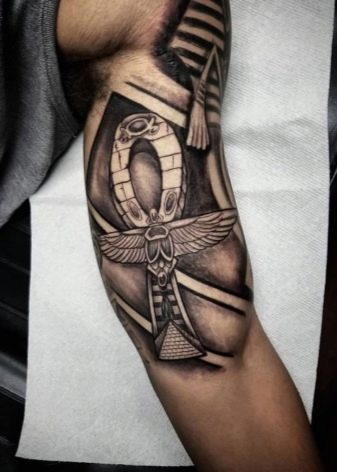
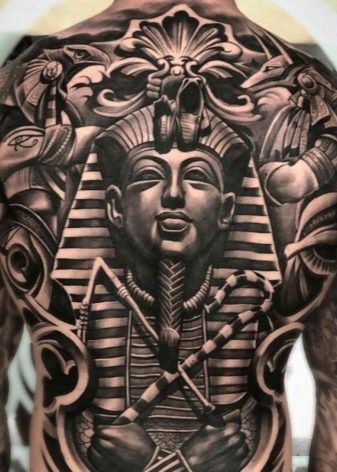
Gods
Egyptian mythology contains about 700 different deities, many of which are known only in certain small areas. Only a small part of the incarnations of higher powers have become popular among tattoo lovers. Let's take a closer look at several options for deities, which are most often depicted by tattoo artists.
-
Goddess Isis. One of the most powerful goddesses in Egyptian mythology, depicted as a woman with wings. Isis is considered the patroness of mothers and wives, so this image is best suited for girls and women. You can position the body pattern in different places: on the back between the shoulder blades, on the wrist, or in a piquant place just below the chest.

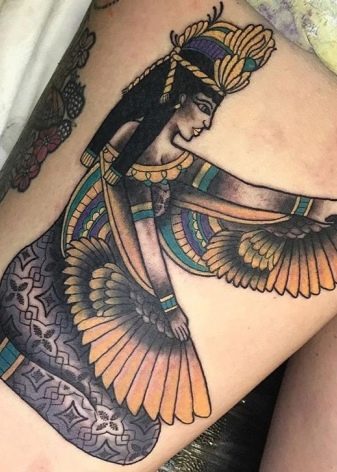
- The sun god Ra. Egyptian myths say that the god Ra is the sun. During the day, he warms life on Earth, and at night he fights with enemies so that the light does not go out forever. A tattoo with a human body and a falcon's head is applied to demonstrate leadership skills. A strong-willed tattoo is suitable for strong, determined men. Ra is most often depicted on the forearm or as a sleeve along the entire length of the arm.
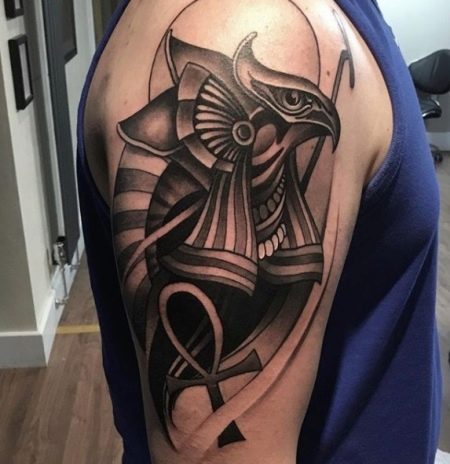
- Goddess Bastet. A representative of a higher power is depicted as a woman with a cat's head. The goddess personifies beauty, fun and love. In ancient Egypt, cats were considered sacred, intelligent and discerning animals, capable of protecting the hearth. Bastet's underwear is believed to preserve family well-being and happiness in the home. Most often, Bastet's tattoo adorns women's arms or back.
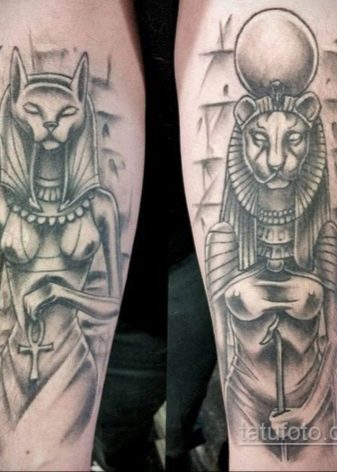
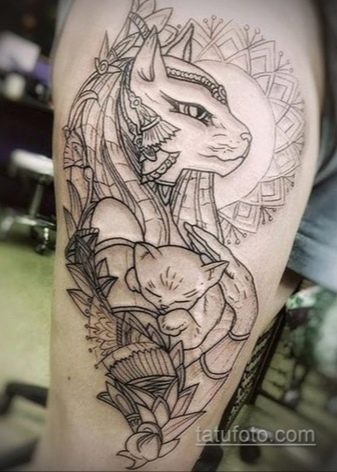
- God Anubis. An ancient god with a human body and a jackal's head, in mythology he is the patron saint and guide of the dead. Some researchers believe that at one time God, like a vigilant guard dog, provided the storage of poisons and medicines. For this reason, many modern doctors apply the image of Anubis on the shoulder or back in order to receive the protection of a representative of a higher power.
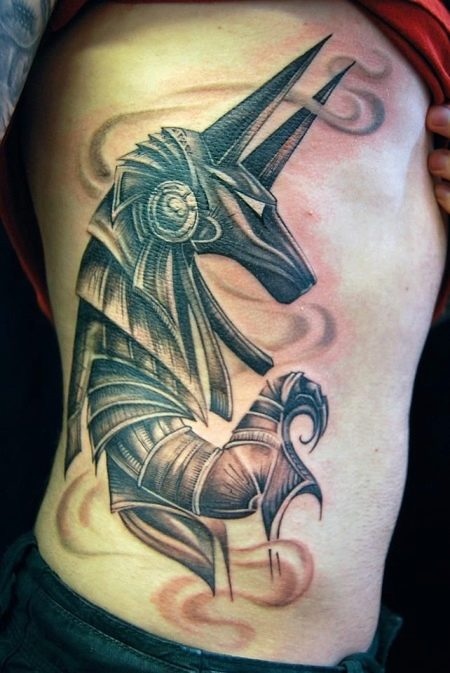
- God Horus. Ancient patron saint of pharaohs, hunters and the military. Horus outwardly is very similar to Ra - he has a human body and a falcon's head, so people most often complement the image of this deity with the symbol of Wadget. The Wadget, or "Eye of Horus", is a powerful symbol representing resurrection and rebirth. Applying such a pattern to the skin shows the strength of the wearer's character, readiness to overcome difficulties and adversities. Many people tattoo the "Eye of Horus" as a talisman designed to protect loved ones in the same way Horus did. Tattoos are often adorned with both male and female body parts - neck, wrist, shoulder or hand.
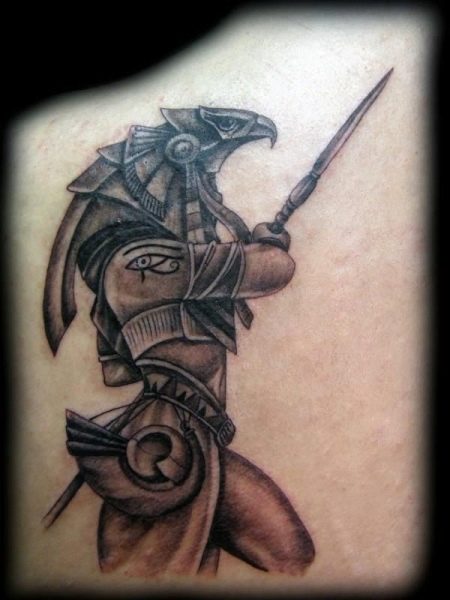
Body drawings are applied not only separately - sometimes they are combined into one general plot. The sun god Ra and Anubis are related, because one is the personification of the beginning of life, and the second is its completion.
Many people put them on their backs opposite each other or on different forearms to remind themselves that time is running out irrevocably, and you need to say important words and do the right things here and now.
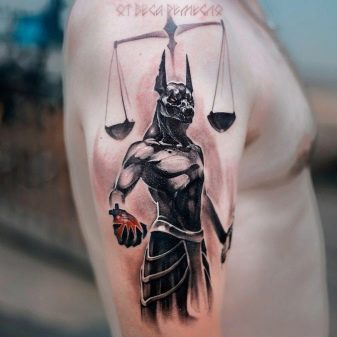
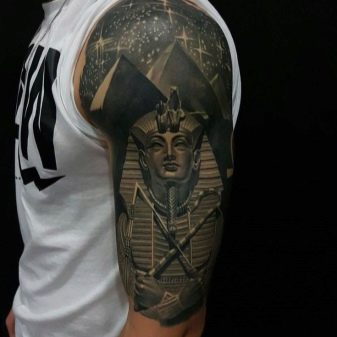
Mummies
Ancient people mummified the bodies of great rulers such as Tutankhamun and Amenhotep. The bodies were embalmed for the preservation of the physical shell of a person and subsequent burial. In ancient times, mummies were associated with resurrection and rebirth, in other words, with eternal life.
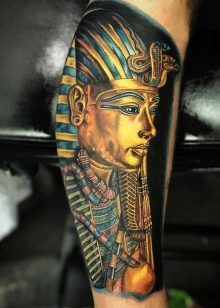

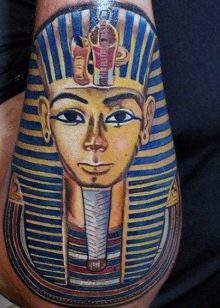
A sufficient number of mummified bodies of pharaohs have survived to this day, and it is these representatives of the Egyptian population that are most often depicted on tattoos. Such a wearable drawing is a sign of a person who has power and strength. The pharaoh's mummy tattoo is a symbol of prosperity, masculinity and sacred knowledge. When people choose drawings in the form of mummies of the pharaohs, they wish in this way to take over some of the success of the great rulers.
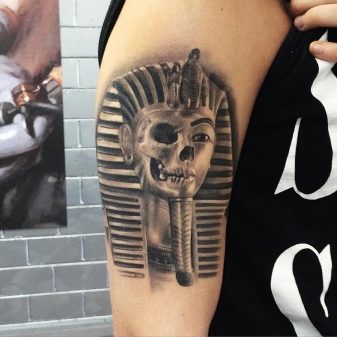
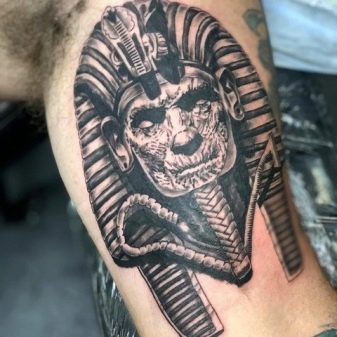
Embalmed officials are depicted on different parts of the body: on the shoulder blades, shoulder, forearm or leg. Sketches for future body jewelry are varied: from simple, flat drawings to volumetric, realistic images.
Realism is highly valued in tattoos - the better, the more reliable the image is, the better the context about the great rulers of antiquity is read.
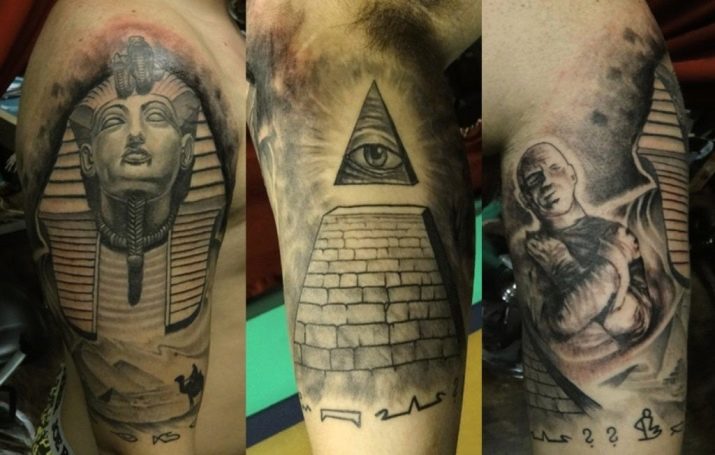
Pyramids
The image of ancient tombs or pyramids has long been a symbol of the accumulation of energy from above. Many people believe that such a tattoo is able to feed its owner with vital energy, collecting it from the outside. Sometimes craftsmen apply several pyramids to the skin of customers at once, creating a kind of amulets that prevent physical and emotional fatigue.
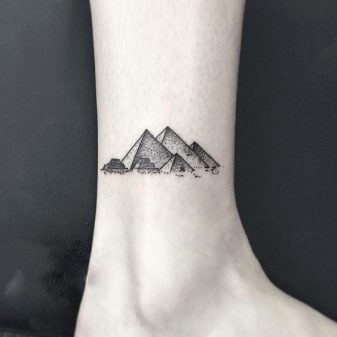

During the research of the artifacts of the African country, scientists found information that the ancient inhabitants of Egypt associated the pyramids with the sun god Ra. The building seemed to the ancient people the embodiment of eternal life and the element of fire.
Like other symbols of Egypt, the pyramid has several meanings, and the association with rapid development occupies an important place among them. At one time, the construction of triangular tombs of colossal size was much ahead of the time with the complexity of the structures - researchers still have not come to one definite conclusion, how exactly the Egyptians managed to create such high-quality tombs without complex technologies and machines.
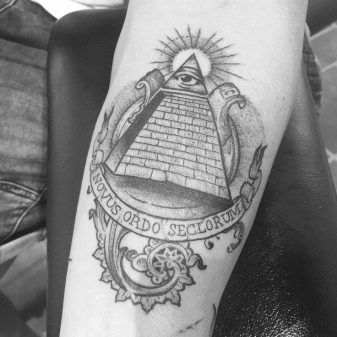
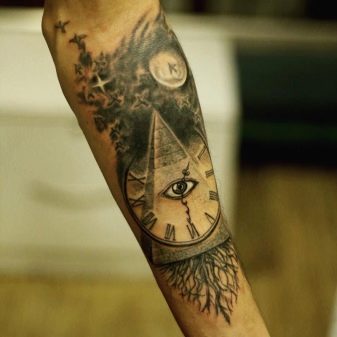
Therefore, it is believed that a tattoo depicting pyramids gives the wearer strength for self-development and skills improvement.
Some pyramid tattoos are depicted with the eye of Ra on top - such a picture symbolizes enlightenment and the possession of knowledge. Many people choose tombs with an eye on the top in order to find a path to well-being and stability. For the image to have a positive effect on the medium, all the contours of the sketch must be clear, and the top of the structure must be directed straight up.

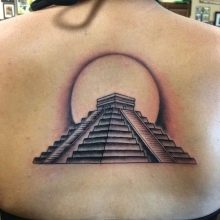

Another version of the Egyptian pyramid is the Sphinx, a huge creature with the body of a lion, the tail of a bull, and the face of a pharaoh. The Egyptians installed sphinxes in tombs to protect the buried bodies. The following meanings were attached to the creature: ensuring tranquility, maintaining well-being and protecting the secrets of its ruler. Sphinx tattoos give the wearer a touch of mystery, and also play the role of a talisman, a protector from ill-wishers.

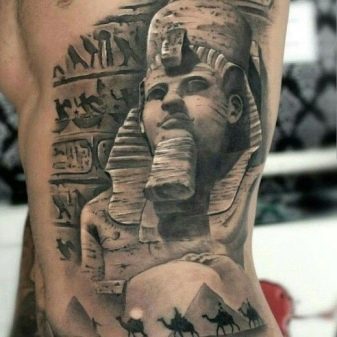
Symbols
In the mythology of the ancient country, there are a huge number of different symbols, hieroglyphs and ornaments with special meaning. Wearable artists often offer clients such unusual designs as an alternative to the obvious ancient Egyptian art. Let's take a closer look at several options for tattoo symbols on the theme of Egypt.
-
Hieroglyphs. Modern researchers have managed to decipher many ancient Egyptian words thanks to the heritage of the ancient Egyptian people - the Coptic language. Complex phrases and sentences found by archaeologists on the walls of tombs attract the attention of the masses.The creators of tattoos began to use separate words for their work, depicting an interesting ornament with ancient scriptures on the body of customers. The modern way of writing Egyptian hieroglyphs is greatly simplified, but has not lost its meaning. Ancient Egyptian inscriptions often adorn people's hands, encircling their wrists like bracelets.


- Cat. Cats were sacred to the inhabitants of Ancient Egypt, therefore, on tattoos, such animals are interpreted as a magnet for success and material well-being. It is believed that the Egyptian cat helps build a career, but it should not be taken lightly, otherwise the effect can be radically opposite.
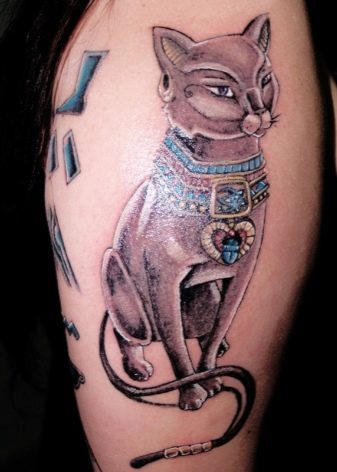
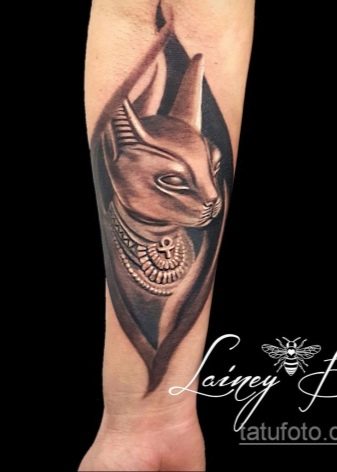
- Snake. In Egyptian culture, the goddess Wajit was depicted in the form of a snake and was the patroness of the pharaohs. It was believed that the image of the snake was the source of the owner's strength, and also helped him maintain the power and aura of invincibility.
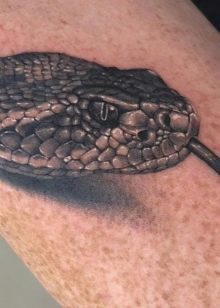
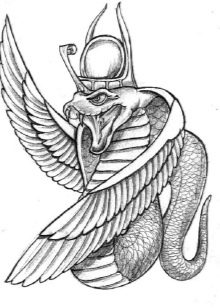
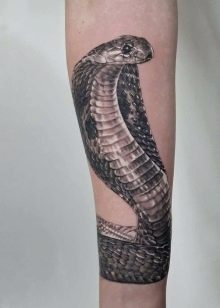
- Ankh. An unusual cross with a loop instead of a base is probably known to many people from films or books. The ankh is shaped like a key to a lock, which is why it is often called the "key of life" or "the key of the Nile." Unusual crosses are often decorated with symbols such as the eye of Horus, intricate designs, or an eagle with spread wings.

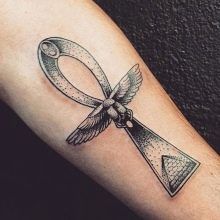
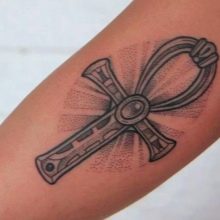
Beautiful examples
There is a huge assortment of different Egyptian-themed wearables. We suggest considering especially interesting and mysterious sketches to make it easier for you to choose the right tattoo.
-
"Eye of Horus". One of the most recognizable tattoos in the style of the ancient country of the pyramids.
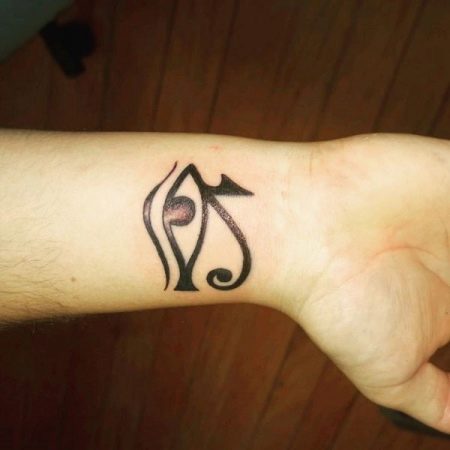
- "Scarab". The same recognizable figure as the "Eye of Horus" talisman.
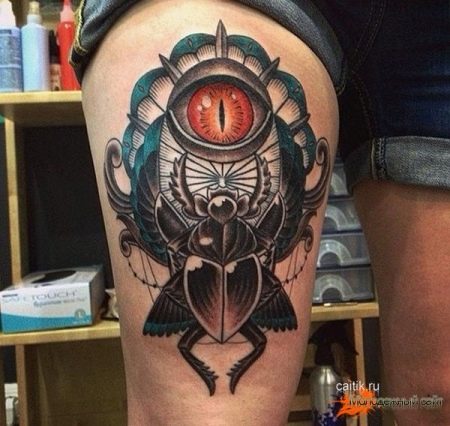
- "Anubis and Ra". A deep and unusual context creates the image of these mythical creatures next to each other.
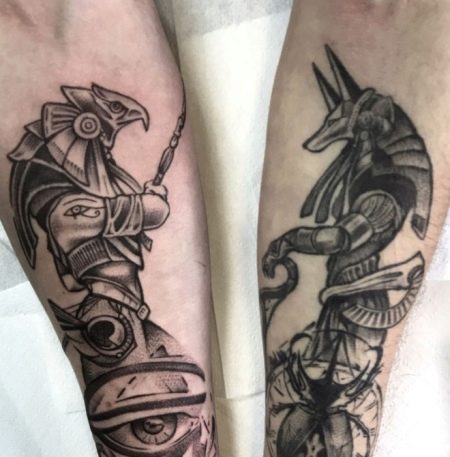
- "Goddess Isis". A beautiful woman with wings will perfectly emphasize the love of the carrier for the ancient Egyptian culture.


- "The pyramid and the eye of Ra". A symbol of enlightenment and power, which many associate with a connection with higher powers.
